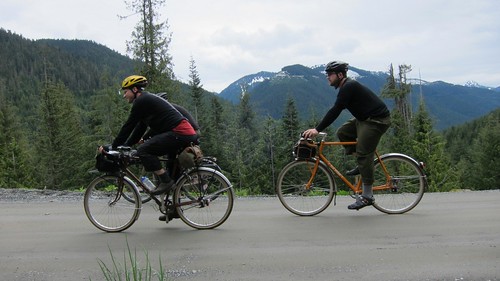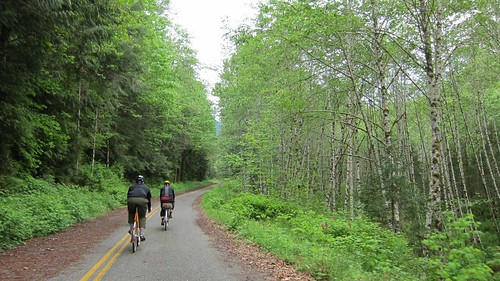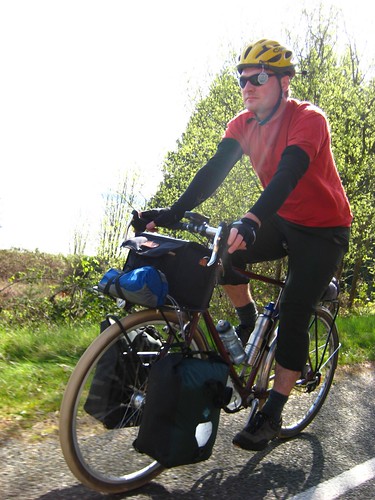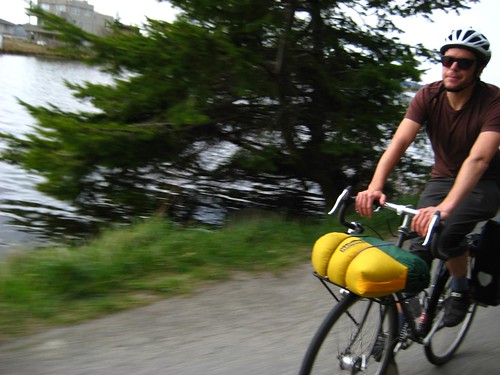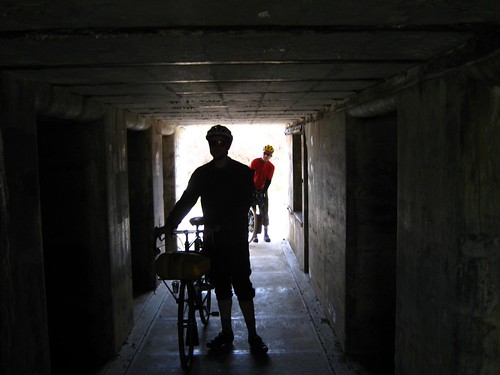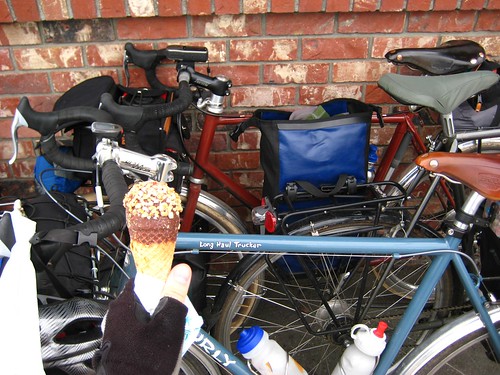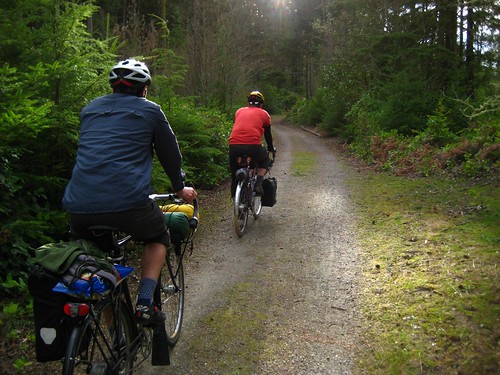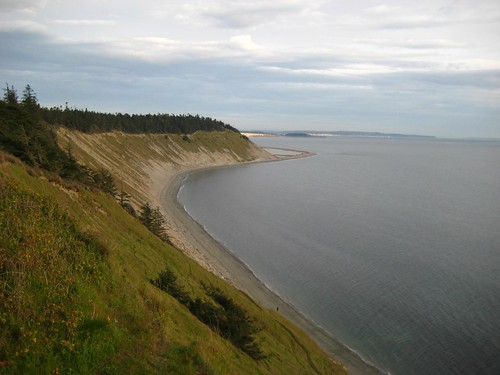Back to the CdA National Forest
John, Pat, and I had such a good time in the Coeur d’ Alene National Forest in June that we decided to go back this September. Andre was interested and came along. To fit the trip into a 3 day weekend Andre and I flew out from Seattle and borrow bikes from John and Pat. We flew in Thursday night, drove out to the base camp, did a long ride on well established roads on Friday and a short ride exploring side trails on Saturday. Saturday night Andre and I flew back to Seattle.
Our last trip turned from car camping into bike camping from a conversation that went something like this:
John: How far will we be from the car at the end of the day?
Alex: About 5 miles?
John: Why am I carrying all of this camping gear? Let’s just ride back here.
This time we didn’t even kid ourselves with bike camping and went whole hog with the car camping. John and Pat brought along a lot of food for us, two big stoves, a folding table, a pop-up shelter, 4 tents, more sleeping bags that you could imagine, and tons of other gear. Andre and I just had to bring a little clothing, snacks for the day, and sleeping bags.
Thursday was chilly but it didn’t rain on us. The first half of the ride used a route that Pat came up with, and took us to the same lunch spot at Magee Ranger Station that we visited before. We started climbing immediately, but the first half of the climb was a good warm up with about 1000′ gained at 5-7% grade. The second half was probably twice as steep on and worse condition roads. The descent into Magee started a bit bumpy, but then we found some nice roads that were great to roll down.
The weather was colder than any of us had expected, but luckily not colder than what we had planned for. At every stop it seemed like we were adding or removing jackets to keep comfortable.
After lunch we had planned to follow our June route up to Spyglass Peak. I was worried about getting that high in elevation and suggested my “wuss route” option. It looked roughly the same length, but I thought it would keep us 1000′ lower in elevation. I didn’t check any topo maps to figure that out though, so it ended up having just as much climbing. It had good views though, and the descent ended about 2 miles from our campsite and kept us off of the only “busy” (meaning 2 cars an hour) road in the whole national forest.
On Saturday we went up what we call “John’s climb”. We drove out on this road in June and John kept commenting on how nice of a climb it appeared to be. This time we found it freshly graded and were enjoying the climb up. Maybe 1/4 of the way up there was an interesting looking spur, so we followed that. It was gated closed and isn’t used in the summer (only for snowmobiles in the winter), so it was quite grown over and involved some hike a bike. We found an old building foundation, a tiny dam that must have been used to provide water for the building, and some good riding and hike a bike. From there we followed a maze of closed roads (some with dead ends) back to camp. The ride was probably less then 10 miles long, but the slower pace and interesting conditions were a nice change from Friday.
Thanks to John and Pat for loaning Andre and I gear and feeding us like kings. Andre and I were brainstorming on where we’d take them for similar riding near Seattle and came up empty. Spokane is lucky to have such a huge and little used national forest just a bit over an hour from downtown. I’m guessing I’ll visit it again at least once next summer.
Friday’s Route: http://phred.org/~alex/maps/CDA-Friday-Sept-2010/ or GPX
Saturday’s Route: http://phred.org/~alex/maps/CDA-Saturday-Sept-2010/ or GPX








